Buying advice: SUP wave boards
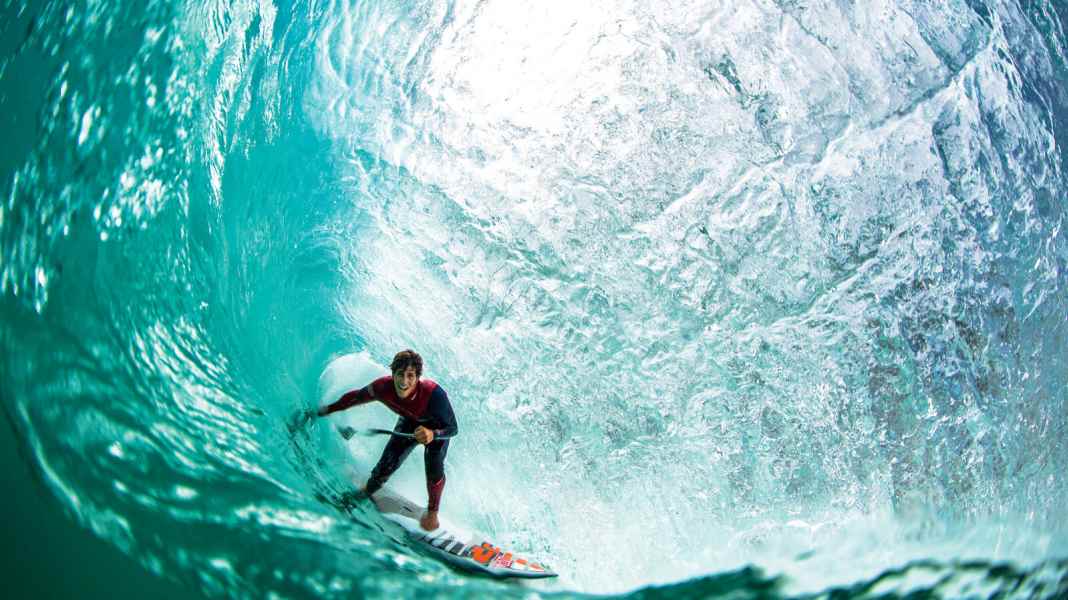
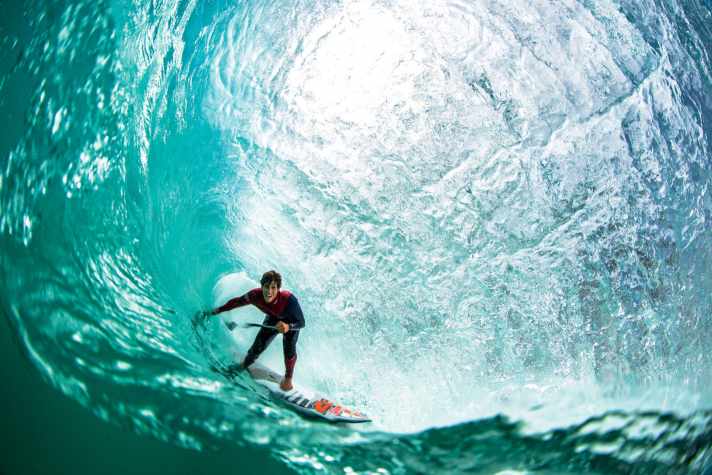
The waves that break on the beaches of our seas have often travelled a long way. Born out of storms, somewhere far from the coast, they invite us to a unique dance. Depending on their temperament, they are fast, powerful, large, small, cosy, wrinkle-free, but often also deeply wrinkled. Having the right board under your feet is no guarantee of perfect harmony with your picky partner, but at least it's a good start to a wonderful relationship.
I'm supposed to get a wave with that? Ridiculous, I'm already happy if I stay a few metres on the back of the wild horse. The year is 2008, and the horse under my feet is 12'6'' feet long and 26 1/3 inches wide. Common dimensions for the wave at that time. Because at the beginning of the modern SUP era was the all-round board. It was 12'6'' feet long because that was the maximum length of surfboard blanks you could get back then. It looked like a thick Malibu surfboard because Laird Hamilton and co naturally had their surfboard shapers on the plane to shape them a board for SUPing. No wonder I struggled with this long, narrow bowl in the short North Sea waves. If I got it to glide at the back, it would brake again at the front in the next wave. A year later, when I took it out on the French Atlantic coast in long, powerful waves, it wasn't just down to more practice on my part that I was able to tame the wild horse and even ride it quite harmoniously.
The right board for every wave
If you look on the internet today, there is a huge selection of wave-compatible boards. Picking the right one is no easy task. Especially when you see pictures of top pros who have such tiny boards under their feet that they would sink mercilessly without paddling or having a wave under their bow. The less foam in the board, the more radical the turns, is the simple formula behind it. In extreme cases, the question remains as to why you don't just go surfing without a paddle. There are a few arguments in favour of this: stand-up paddling has a few advantages over surfing that make it easier to get into the wave: you don't have to change from a lying position to a standing position, you have a better overview of the break zone and, last but not least, you can get from A to B quickly in the line-up. Conversely, this means that if you can do it, you often get significantly more waves than a surfer. However, as you are almost never travelling alone in the line-up, you should always be able to share. In other words, not every wave you could get is yours. You should always let surfers have their hard-earned share of the cake. Otherwise there will be trouble quickly and quite rightly. A second reason why SUPers are often anything but welcome guests in the line-up consists of huge, wildly flailing boards that not only endanger the rider, but also everyone else in the water. The biggest advantage of being able to get into big waves quickly with our paddles can quickly turn into uncontrollable situations in the wash. That's why, if in doubt, you should always position yourself at the edge of the line-up first or, even better, simply paddle a few metres further. Especially on the North Sea, you often have a few waves all to yourself. Speaking of alone, don't skimp on a good leash. Even with a SUP, you usually have to dive under waves more than you'd like. A high-quality leash is money well spent if you don't want to suddenly reappear without a board.
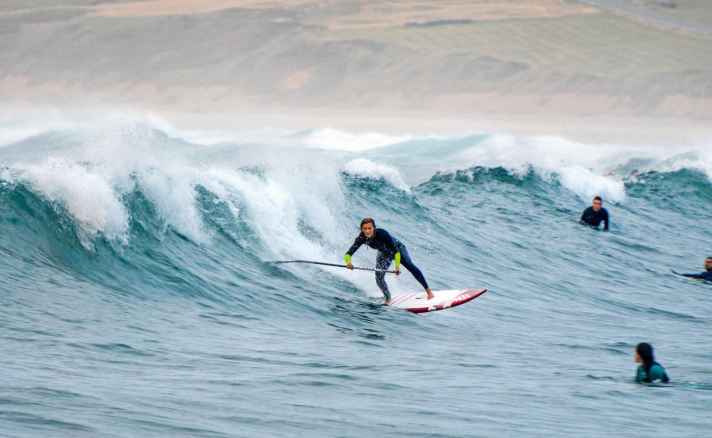
Personality is in demand
The more I use my SUP board in the waves, the more I realise that there is no such thing as the perfect board for every wave. But what there is, is the board that suits you best in certain conditions. Many factors play a role here, so this overview should only be seen as a rough guide. I have assumed an average paddler weight of 80 kilos. The most important thing is, of course, that you can stand relatively easily on the board. Volume distribution, underwater hull, rail shape and width all play a role here. Concave underwater hulls are usually more stable than V-shaped ones. Shapes with a wide bow and wider stern also help with a relaxed stance. The following key can be applied to volume: Pros - body weight plus 0-15 litres volume. Experts - plus 15-30 litres. Casual riders - plus 30-100 litres. In terms of width, 32 inches has become the standard for beginners and relaxed wavers. Of course, anything above this helps with stability, but you have to use a lot of force in the turn to get the board on the rail. 30 inches is a good all-round width. Anything less depends on taste, spot and riding ability. My all-rounder, for example, is 30 inches wide and has very thin rails. It actually always works, but Sylt's choppy wave plus chop has often taken me off my board involuntarily. You have to take a sporty approach to days like that ...
The best tip for anyone who is serious about a trip to the waves is to try out as many different boards as possible to find their perfect partner. A change of fin often has an amazing effect on the riding characteristics of the shapes. Have fun and be careful, once you have dared to dance, you are quickly caught up in the fleeting beauty of the moment and can hardly wait to be asked to dance again as soon as possible.
A BOARD FOR EVERY WAVE?
At first glance, the board market seems unmanageable. However, with our overview, you can quickly find the most suitable type of board for you and "your" wave.
ALLROUND
Length 10'0'' to 12'0''Width 30''' to 36''Volume 150 to 250 litres
PRO - Easy and quick to paddle - Stable against tipping - Little dependent on the right foot position - Fun even in flat water
CONTRA - Too sluggish to turn quickly in front of the wave - You have to run back and forth for turns (longboard style) - Fits better in long and slow waves than in short and steep ones - Difficult to control on the breaking part of the wave

BEGINNER WAVE TO ALLROUND WAVE
Length 8'2'' to 12'0''Width 32'' to 36''Volume 120 to 250 litres
PRO - More compact than all-round boards, therefore easier to control on the wave - Reacts faster to foot control - The short boards in particular are easier to position for paddling and therefore fit better in shorter waves (North Sea)
CONTRA - Less easy to paddle than all-rounders - Quickly choppy in larger and more powerful waves - A lot of edge pressure required for fast turns

ALLROUND WAVE - ADVANCED
Length 7'2'' to 9'0''Width 28'' to 30''Volume 90 to 130 litres
PRO - Very responsive - Fast acceleration - Stance hardly needs to be changed in turns - Low volume is advantageous when paddling through high white water - Shortboard feeling
CONTRA - Already quite tippy - Little directional stability when paddling - You have to position yourself precisely for take-off - In big, powerful waves, fish-shaped shapes with straight rocker lines tend to become unstable (airborne)
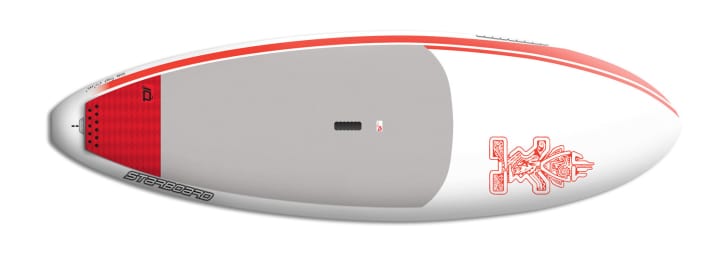
WAVE PROFESSIONAL
Length 7'0'' to 9'0''Width 23'' to 29''Volume 70 to 130 litres
PRO - Extremely responsive - Reacts to the lightest foot pressure - Stance does not need to be changed - Smooth in the turn, even in fast, powerful waves - Shortboard feeling - Low volume is advantageous when paddling through high white water
CONTRA - Extremely tippy - Must be placed precisely for take off - Less forgiving - Difficult to paddle
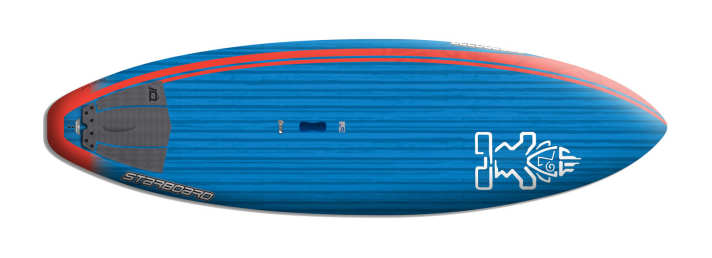
LONGBOARD STYLE
Length 9'0'' to 10'0''Width 28'' to 30''Volume 120 to 140 litres
PRO - Suitable for all waves Longboard Style
CONTRA - For turns you have to go forwards and backwards on the board - Paddling and turns in steep waves requires a lot of practice - Turning sluggishly to paddle in front of the wave

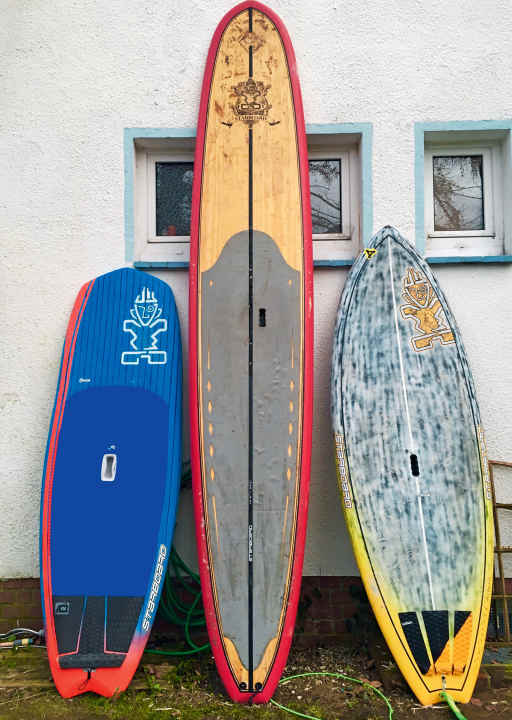
...
THE PROFESSIONAL SELECTION
Windsurfing wave champ Jason Polakow and his set-ups for perfect waves on calm days in Hawaii.
Which boards do you surf? I ride the "Surf Pro" line in 8'0'' and 8'2''. These are boards like enlarged surfboards, which is why they work so well when the waves are also very good.
What characteristics do you like about this type of shape? These boards are not too wide, so you have a lot of speed on the wave. You can't make a really fast bottom turn with rather wide boards.
What are the right conditions for you and the boards? Waves between two and eight feet (Red.: Attention, Hawaiian understatement. That's swell height measured on the backside and means a wave face of about 1.5 to 4 metres). They work well when the wave breaks hollow.
What do you look for in a paddle? In the waves, I prefer a softer shaft. Stiff paddles cause me problems with my shoulders because I tend to paddle too hard. I use a size 90 paddle for waves and a size 100 for racing.


